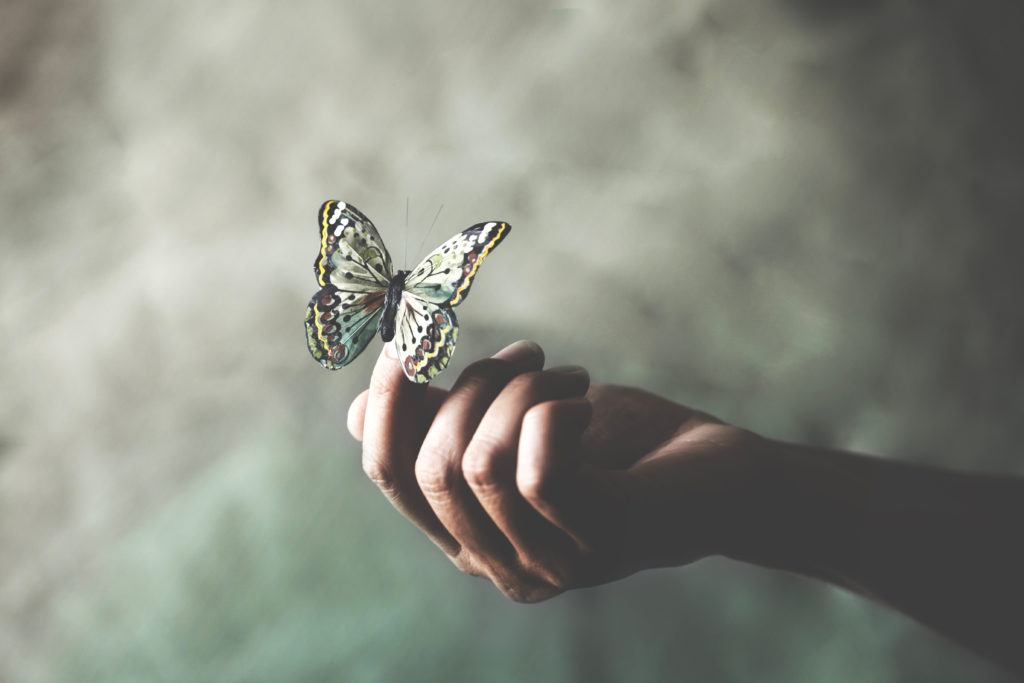
Psychedelics are not tame substances. The therapeutic benefits of drugs like psilocybin and LSD are becoming better known, but they are also perfectly capable of mayhem.1 This leaves sober-minded people with a dilemma: what do we do with drugs famously capable of sending people to both heaven and hell?
If you’re a scientist, you come up with a long list of safety precautions to keep hell at bay. Most of the scientific knowledge we have about psychedelics comes from clinical trials, perhaps the safest possible setting in which to take them. As something of an insider, I hope I can help people appreciate the depth of the precautions we take in research, as well as what that means for interpreting study results and implementing psychedelic therapy in different settings. As with rock climbing, new cars, and trampoline parks, a lot of thought goes into safety behind the scenes.
First, a basic question: what are safety precautions trying to prevent? In essence, three things. The first and easiest is a dangerous physical reaction to the drug, which with psychedelics is exceedingly rare; one influential researcher called LSD and psilocybin “freakishly safe” when it comes to physical toxicity.2 The second is an acute negative reaction – a “bad trip” – especially one that is either so strong or so prolonged that it is not likely to turn beneficial.3 The third is the most dire: a sustained negative reaction, at worst a prolonged psychological crisis. Though also incredibly rare, the fact that this is theoretically possible means we take it seriously.
Rule 1: Not Everyone Should Take Psychedelics
Safety begins with the belief that some people, at some points in their lives, should not take psychedelics. This is obviously not a radical idea; most people have at least heard that those with schizophrenia should not tempt hallucinogenic fate. But researchers also typically exclude participants with any history of psychotic episodes, bipolar disorder, or personality disorders, as well as anyone with a close relative suffering from schizophrenia (it has a strong genetic component).4 In studies with healthy volunteers, any psychological disorder at all may be disqualifying, as is the intake of psychoactive medications.
Beyond a psychiatric history, some studies require participants to pass a general medical screening, which particularly looks for abnormalities in the cardiovascular system (psychedelics modestly elevate heart rate and blood pressure5). Pregnant women are always out, and frequent psychedelic fliers usually are. And though less common, researchers may also look for certain personality traits in their participants. In general, the ideal study participant is emotionally stable and not averse to novelty; the kind of person who won’t scream at the guy who cuts them off in traffic on their way to a new sushi restaurant. A few studies have even screened out people who score high in neuroticism, a core personality trait that describes someone’s predisposition to experience negative emotions and may predispose people to unpleasant trips.6
Participants aren’t the only ones to get this extreme vetting. The professionals who are responsible for safety, whether they be therapists, guides, or unassuming grad students, must have particular characteristics as well. Participants in studies are always supervised by trained professionals, often a pair of psychologists, who are not only knowledgeable about psychedelics and altered states but also highly empathetic and able to create a trusting atmosphere with a participant in a relatively short period of time.4 Though they often have formal training, their interpersonal abilities and knowledge of the psychedelic state are widely considered more important than a degree.
Rule 2: Preparing Person, Space, and Substance
Before taking any drugs, participants in clinical trials undergo extensive preparation for the psychedelic experience.4 The aforementioned trained guides take time to get to know the participants and build trust, and to educate them on what they might experience in a psychedelic session. They also advise people on the possibility of difficult experiences and how to handle them. This preparation can take up many hours spread out over several weeks so that by the end of it, the participant has asked all of their questions and ideally feels absolutely safe with those supervising them.
At least some of these preliminary appointments take place in the psychedelic session room. Even in clinics, the sterile hospital look is switched out for a comfy, living room-like aesthetic. Couches, pillows, and serene decorations are common, as is soft lighting and the occasional mushroom statue. This is a private, safe place to give up control, and it greatly reduces the risk that unexpected events might intrude on the trip.
Last but not least, the drug itself is prepared beforehand: a moderate to high dose of a pure, top-quality substance, often from a government-sanctioned lab. This takes the risk of contaminants and inaccurate dosing out of the equation.
Rule 3: An Ever-Present Guide
Before the session starts, many of the risk factors for negative reactions have already been greatly reduced. Once the trip begins, medical personnel are available in case of emergency and at least one guide is always present in the room while participants are under the influence. These guides are able to respond in case of distress and nip a potential bad trip in the bud, as well as stop participants from doing anything harmful (or embarrassing). The trusting relationship they have built greatly enhances their ability to do this.7
If participants start to feel distressed, guides are trained to radiate a sense of empathetic calm, not only with comforting words but also with their tone and body language.4 They are the anchor to reality, and their calm demeanor in crisis can communicate to participants that even a frightening experience is not really going to hurt them.1 Music is also almost universally used in psychedelic sessions, and it can be instrumental (sorry) in helping participants feel safe and calm.8 Even an escalating negative reaction can often be impeded with the right words or music, a comforting touch, and a reminder that the participant is safe and their experience is transient.4
As a last resort, guides can administer an antidote (usually a benzodiazepine) to weaken or end the trip, although this is rarely necessary.4 Indeed, the fact that participants know they can get off the ride makes them less likely to want to. At the root of many bad trips is a fear of losing control, and the presence of an antidote gives people a sense of control even if they never use it.
Rule 4: Integration
The final cornerstone of psychedelic safety is integration or discussing and processing the experience together with the guides after it is over. Often, integration also means taking any perceived lessons from the experience and applying them to one’s life in hopes of improving well-being. Participants benefit from at least one integration session, but the integration period may be longer if needed and feasible.4
Integration’s primary value as a safety measure is checking for persistent negative effects that might appear after a psychedelic experience, and if need be, preventing them from getting worse.4 Especially if the experience was challenging, therapists and guides consider it highly important to support participants afterwards and give them space to discuss these strange and potentially life-changing experiences. They specifically ask whether any negative effects have lingered, including persistent perceptual changes (e.g. flashbacks), dissociative symptoms, or signs of psychosis, and can make sure participants get the help they need for such symptoms.
Credible reports of negative effects after psychedelic use in recreational settings exist, although they are still relatively rare.2,9 But in studies with modern safety standards – so, in the past 25 years – none of these long-term reactions have been observed: a powerful testament to the effectiveness of safety procedures in psychedelic research.10
What About Other Settings?
Clearly, scientists do a lot for safety. It may also be clear that many of their safeguards are hard to implement in other settings. Does this mean that other environments are more dangerous?
To answer this question, let’s review how scientists prevent adverse reactions in trials. Studies take place in a private, safe environment, with clean substances and moderate doses, screened participants, sufficient preparation, competent guides, and integration afterwards. Any setting which has this basic profile is probably about as safe as a clinical trial. Religious psychedelic use within many indigenous communities checks these boxes, as does regulated psychedelic therapy outside of research (e.g. in compassionate use exemptions). Other settings are riskier to the extent that they neglect these basic safeguards, with more neglect probably meaning higher risk.
This does not mean that people are guaranteed a horror trip in less controlled settings. It rather means that if one starts to build, there are fewer things that can stop or transform it, and it may be more likely to negatively affect the person after it’s over.2 The precise risk of a malignant bad trip is difficult to judge. On the one hand, psychedelics are still relatively safe and prolonged adverse reactions are not common. On the other, many recreational users report having had difficult experiences that at least temporarily exceeded their coping mechanisms or affected them negatively for some time afterwards.11,9
People can consider this when evaluating retreats, clinics, and other settings in which they might plan on taking psychedelics. If guests are not well-screened, if the preparation is minimal, if the session monitors are not well-trained or numerous enough to handle a crisis, and if there is little follow-up after the experience, one cannot assume the same level of safety seen in studies. The acceptable level of risk is a personal decision, but it should be made with the best information.
Judging the risks of psychedelics is a balancing act between avoiding an unrealistic account of their dangers, yet taking rare adverse effects seriously. The clear success of clinical trials in ensuring participant safety shows that it is possible to reap the benefits of psychedelics while reducing the risk of severe adverse effects, especially prolonged ones, to nearly zero. Understanding how scientists manage this can improve people’s ability to judge the safety of different settings and contribute to a culture of safety around the use of these powerful substances.

A very succinct assessment of the optimal ‘set and setting’ tools necessary for a positive, healing experience.